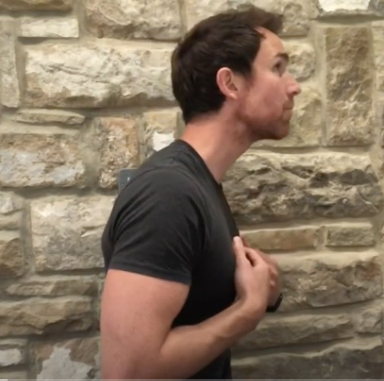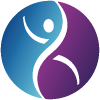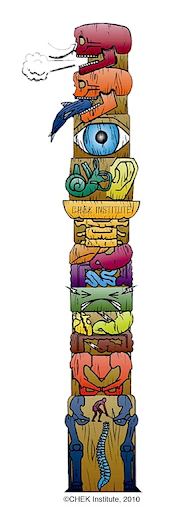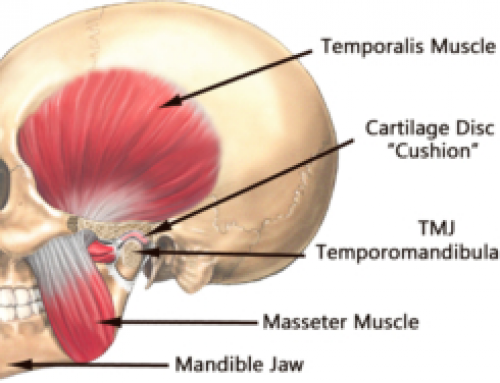Over the next few months I am going to discuss in further detail the physical assessment I do for new and existing clients.
I am currently based in Harrogate working as a personal trainer, rehabilitation specialist, and Holistic Lifestyle Coach at Harrogate Sports and Fitness Centre.
I wanted to give you an insight into how I do a full physical assessment with a client. The Totem Pole pictured at the bottom of the blog demonstrates every aspect of the assessment and starts with the most important for survival to the least important. For example our eyesight is a more influential system than our joints.
Here are the components of the assessment:
- Breathing
- Mastication
- Vision –TALKED ABOUT IN TODAY’S BLOG
- Auditory / Vestibular
- Cranio Cervical
- Visceral Health
- Limbic/Emotional
- Sacro occipital
- Joints
With this thorough assessment I can very quickly identify where you have your challenges and how or if it relates to physical pain and various other health challenges. Coupled with this a full assessment of your:
- Diet
- Sleep
- Levels of Stress
- Hormonal Profile
- Medical History
With all this information I can give you a fully customised health, fitness, and well being program.
Many clients have come to see me with standard orthopaedic problems such as back pain that have been triggered by an issue with their neck,vision, breathing, and jaw.
In Today’s blog I am discussing the influence of ocular health on our posture and general health.
In my visual assessment I assess:
- Eye movements
- Standard eye chart testing
- Cover – uncover testing to determine any inward or outward movement of the eyes.
- Reading a story
- Near point convergence
- Bead Test – this can tell me numerous things about a client’s vision
- Head rotation test
Both head and neck problems have direct effects on the eyes. it has been shown in research that when people are provided with cervical (neck) support collars they often feel postural instability and unsteadiness of gait when in situations of poor illumination that hinder the influence of their vision.
Additionally further research has shown people with orthopaedic complaints had visual/eye defects and irregular astigmatism. This may lead you to question what caused the orthopaedic complaint and did it originate from a bigger driver rather than just assuming a foot issue is a foot issue, or your back hurts because your core is weak. This could easily be true but the driver could be coming from a more important system on the hierarchy of survival which is illustrated on the totem pole below.
Forward Head Posture and your Vision
 Forward head posture is something that is more and more common nowadays and the average British 14 year old has the neck of a 67 year old. Could this be influenced by poor ocular or visual health? Yes, absolutely. There are a-lot of things that cause this such as screen habits,breathing pattern disorders etc. However today I am discussing the visual link with this postural compensation.
Forward head posture is something that is more and more common nowadays and the average British 14 year old has the neck of a 67 year old. Could this be influenced by poor ocular or visual health? Yes, absolutely. There are a-lot of things that cause this such as screen habits,breathing pattern disorders etc. However today I am discussing the visual link with this postural compensation.
Forward head posture affects the visual system as circulation to the eyes is comprised by trigger points created in the neck. The trigger points in the neck will further compromise neurological signalling and may cause double or blurred vision.
Furthermore, forward head posture can also create leg length discrepancies, shoulder problems,and neck subluxations, this can only compromise your visual system further as it will need to adapt to the compensations occurring in your body.
The ideal position of the head is one in which the eyes are level with the horizon and the otic (ear), optic (eye) occlusal (teeth) planes are horizontal. When this position cannot be achieved, because of inadequate postural compensation, the eyes must compensate to maintain horizontal gaze and binocular vision. It is important to add that the eye muscles are skeletal muscles and that they respond to the stress of compensation. If the head remains out of line and altered there will be postural compensations and/or strain in the ocular muscles. Furthermore, it it also important to note that if you have an eye compensation that leads to postural problem in the neck down one side, which then leads to altered shoulder mechanics on one side, which leads to a potential pelvic problem, leading to a knee problem, and then potentially a foot problem which is the point at which you knock on the physiotherapists door and they treat the symptoms (the foot) and not the cause. This is the reason for doing a whole body holistic assessment.
Note
At this point I should clarify that eye dysfunction can create poor posture and poor posture can create eye dysfunction.
Other additional research findings
Frequent head tilting to one side is a common habit that can create postural abnormalities that have been mentioned above. In fact roughly a quarter of people who complain of errors of refraction or the extrinsic ocular muscles can adopt this habit.
Refraction errors is where the eye does not bend light correctly resulting in blurred vision.
Also patients with convergence insufficiency showed increased potentials from neck and scalp muscles which may contribute, or be a source of tension headaches.
Convergence insufficiency is where your eyes do not move at the same time.
It is very clear that postural work improves eye function and eye correction improves postural function. The two work synergistically as part of a fully integrated system. When you find the main cause you can then prescribe the best course of treatment/ and or exercises.
What is my next step?
Your next step is to get a full assessment of your vision and posture and I can refer you out to a medical specialist or help you with your next course of action.
Examples of Treatment options
- Eye Exercises
- Corrective Exercises to improve posture
- See a Neuromuscular therapist who can do trigger point release of the eyes.
- Have a full nutritional and lifestyle assessment
- Referral to appropriate physician
- See a Medical Doctor
I hope this blog has provided you with a useful insight into ocular health and posture.
Resources
Recommended book
The Bates Method For Better Eye Sight Without Glasses – By Dr Bates
Find out more about:
- Tips on Overcoming Back Pain
- Healthy and Tasty Recipes
- Exercise and Workout Routines
- Tips for Weight Loss
- Real Life Case Studies
- Healthy Living
- Sports Conditioning



Leave A Comment